East Asia is the world's sixth largest cryptocurrency economy this year, accounting for 8.9% of the global value from July 2023 to June 2024. The region received over $400 billion in on-chain value during the same period.
Source: Chainalysis
Translation: Deng Tong, Golden Finance
East Asia is the world's sixth largest cryptocurrency economy this year, accounting for 8.9% of the global value from July 2023 to June 2024. The region received over $400 billion in on-chain value during the same period.
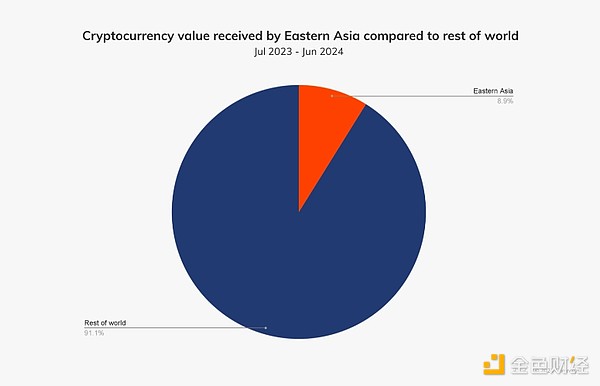
During the research period, the share of cryptocurrency trading value in East Asia remained relatively stable without significant fluctuations.
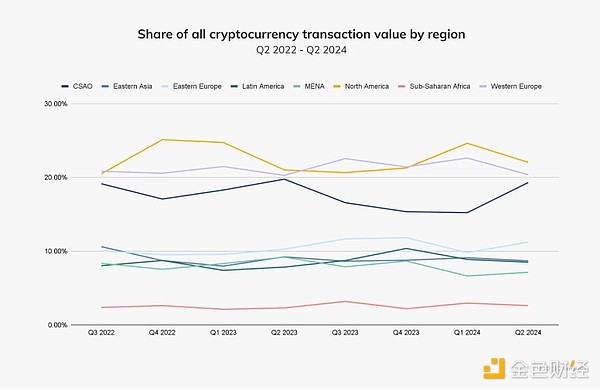
Similar to all other regions in this report, centralized exchanges are the most popular service category in East Asia, accounting for 64.7% of cryptocurrency value.
During the research period, the share of cryptocurrency trading value in East Asia remained relatively stable without significant fluctuations.

Most of these activities are driven by large transfers from institutions and professional investors. It is worth noting that, compared to any other region studied in this report, East Asia has the largest share in professional-scale transfers.
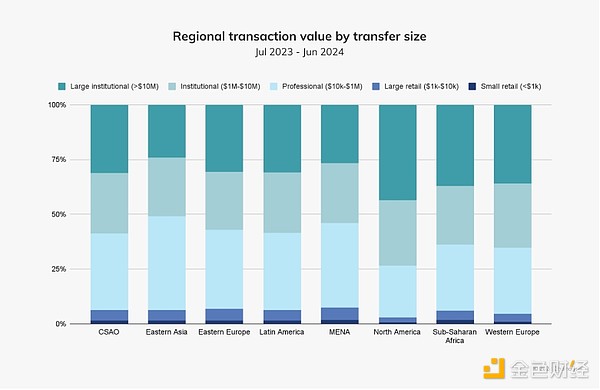
The services used by professional investors are in stark contrast to those used by institutional investors. As shown below, professional investors mainly use centralized exchanges (CEX), while institutional investors use decentralized exchanges (DEX) and other decentralized services (DeFi). We speculate that institutional investors often seek to exploit market inefficiencies for investment strategies; due to the wide asset coverage, DEX usually provides more arbitrage opportunities than CEX.
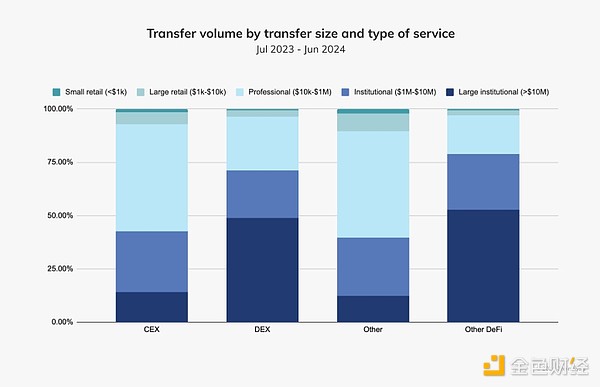
East Asia occupies five of the top 50 regions with the highest cryptocurrency adoption rates globally: South Korea (19), China (20), Japan (23), Hong Kong (29), and Taiwan (40). Below, we will discuss in detail the factors driving the adoption of cryptocurrencies in these countries.
South Korea remains the largest market in East Asia
During the research period, the value of cryptocurrency received by South Korea was approximately $130 billion, leading in East Asia.
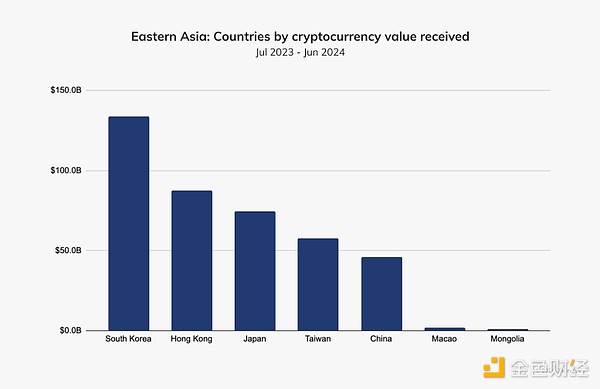
Since the first quarter of 2023, the share of trading volume in South Korea has been steadily increasing in East Asia. We interviewed the head of a top cryptocurrency exchange in South Korea, who speculated on several factors contributing to this growth: "Distrust of the traditional financial system has led investors to seek cryptocurrencies as alternative assets. As large companies like Samsung and the region as a whole focus on improving operational transparency and efficiency through blockchain, the public's view of cryptocurrencies as a viable investment choice has been further consolidated."
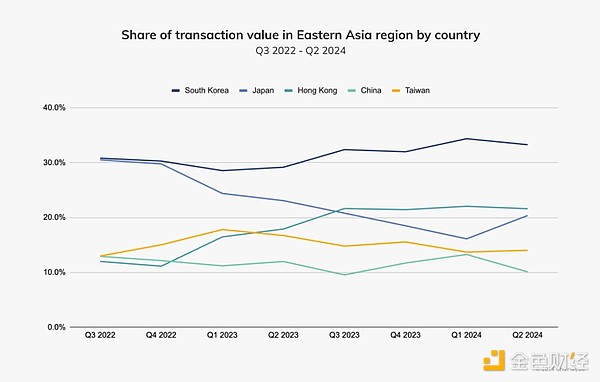
Another head of a South Korean exchange provided us with more insights into these trends: "As a top IT country, South Korea can easily trade digital assets through mobile applications and PCs. The general public's interest in cryptocurrencies is growing, especially after Bitcoin surpassed $70,000 in January 2024." This increase in trading activity is evident in many places—specifically in altcoins and stablecoins. Altcoins are the currency primarily used by South Koreans for trading with the Korean won (KRW), and compared to any other cryptocurrency, altcoins have the highest outflow on global exchanges. The chart below shows that the increase in stablecoin outflows since December 2023 coincides with the listing of USDT on major exchanges in South Korea, such as Coinone and Bithumb.
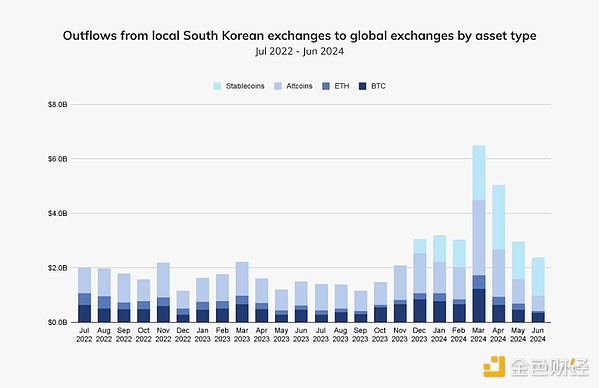
Following altcoins, Bitcoin (BTC) is the second largest cryptocurrency by trading volume, on par with the Korean won.
"Ripple has been very popular in South Korea since 2017, when it was expected to replace the SWIFT international remittance system," pointed out the head of the second exchange, referring to the international information system used for international payments and settlements. "We believe the reason for this popularity is that Ripple's transfer speed is very fast, about two seconds, and its unit price is relatively lower compared to BTC and ETH."
In terms of actual trading strategies, South Koreans seem to often use local exchanges to move funds in and out of global exchanges, which offer diversified assets, arbitrage opportunities, margin, and exit channels. The amount of funds transferred from these local exchanges to global exchanges is highly correlated with the Korean premium index, indicating arbitrage opportunities.
The head of the first exchange explained, "The kimchi premium refers to the phenomenon where cryptocurrency prices in the Korean market are higher than the global market. This is mainly because the demand in the Korean domestic market is higher than the global market. The kimchi premium fluctuates according to market conditions and regulatory changes, making it a popular phenomenon among traders." It is worth noting that in March 2024, when Bitcoin hit a historic high, the kimchi premium soared.
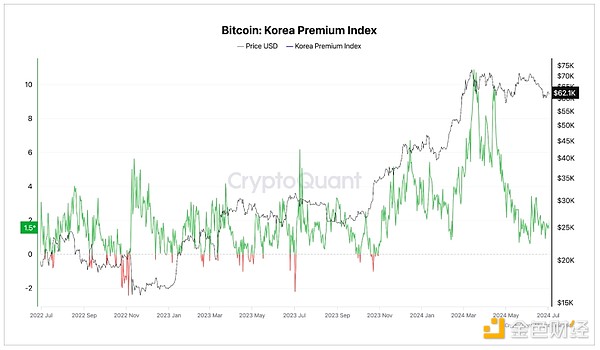
The strong interest in altcoins and diversified trading opportunities mentioned above bodes well for South Korea as a leader in cryptocurrency innovation. As we will explore later, this interest and supportive regulatory frameworks in other regions may further accelerate the prominent position of cryptocurrencies in East Asia.
Hong Kong may ultimately influence the reopening of the cryptocurrency market in China
As discussed in previous years, China's relationship with cryptocurrencies has been tumultuous, characterized by multiple crackdowns and regulatory changes. Despite being an early center for cryptocurrency mining and trading, the Chinese government has imposed increasingly strict restrictions on unlicensed cryptocurrency activities due to concerns about financial stability, fraud, and capital flight. These actions led to extensive restrictions on cryptocurrency-related business activities in China in 2021, undoubtedly resulting in an overall decline in cryptocurrency-related network traffic from China for trading services since mid-2020.

In any case, Hong Kong has become a cryptocurrency center in the Greater China region, and the open attitude of regulatory agencies towards cryptocurrencies and the decisiveness in formulating regulatory frameworks further promote institutional adoption. Hong Kong is not an independent country, but a special administrative region of China with unique legal and regulatory frameworks. Its unique status allows it to promote financial innovation more flexibly, which is why we treat it separately from mainland China in this report.
Unsurprisingly, Hong Kong has the highest year-on-year growth rate in the East Asia region, reaching 85.6%, ranking 30th in our global cryptocurrency adoption index.
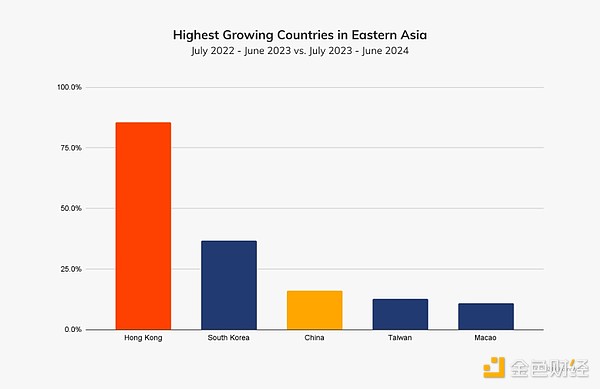
Next, let's take a look at some of the latest trends in mainland China and Hong Kong.
Shift in User Focus
After the Chinese government closed access to mainstream cryptocurrency exchanges in 2021, users began to shift their focus elsewhere.
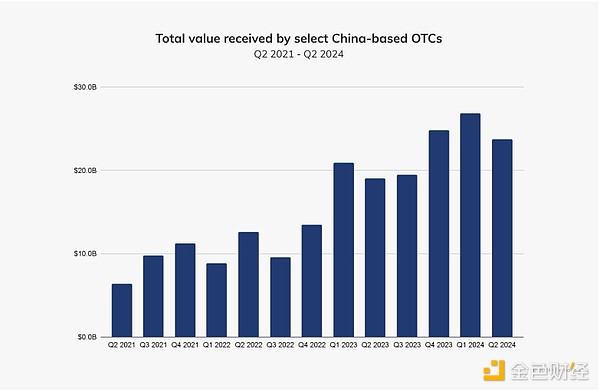
The same pattern applies when we observe the relationship between the inflow of funds for over-the-counter cryptocurrency trading and the decline in the Shanghai Stock Exchange's Shanghai Composite Index.
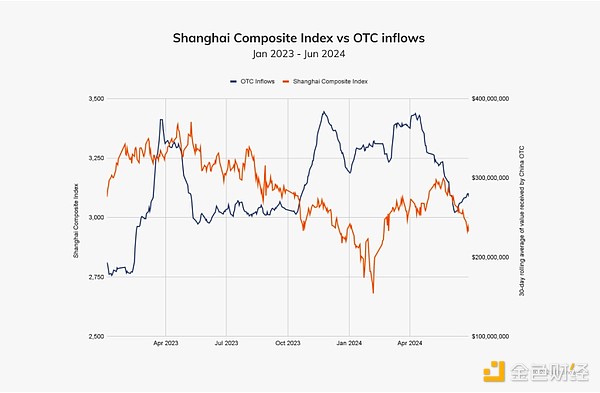
Supportive Regulatory Framework in Hong Kong Drives Institutional Adoption
In June 2023, the Hong Kong Securities and Futures Commission implemented a new regulatory regime for Virtual Asset Trading Platforms (VATP). This regime provides a regulated pathway for retail investors to access cryptocurrencies, but also sets strict prudential, consumer protection, and anti-money laundering/counter-terrorist financing standards. Over the past year, regulatory agencies in Hong Kong have been working to implement this new regime.
May 31, 2024 marked the end of the transitional period for this new regime, meaning that exchanges can only operate in Hong Kong if they are licensed or "deemed" licensed. Several popular exchanges' local branches withdrew their license applications before May 31, forcing them to cease providing trading services to Hong Kong residents. Given that their trading volumes have reached hundreds of millions of dollars since 2022, these developments may trigger a shift towards licensed or "deemed" exchanges, or an overall reduction in activity. As we can see below, the value share obtained by these exchanges has been steadily declining, with recent activity hovering around 10% to 15%.
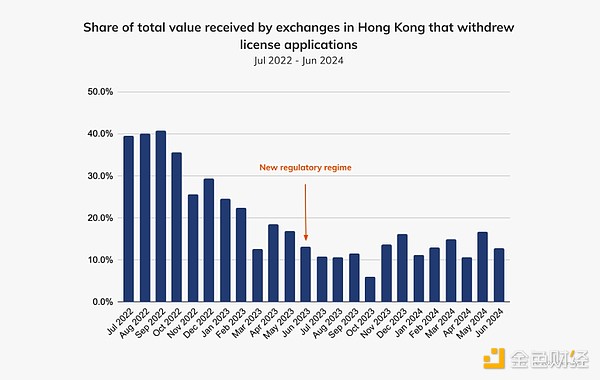
Stablecoins account for over 40% of the total quarterly value in Hong Kong; with the regulatory framework of the Hong Kong Monetary Authority (HKMA) in effect, this proportion may increase as regulated stablecoins will be allowed to be issued to retail investors in Hong Kong.
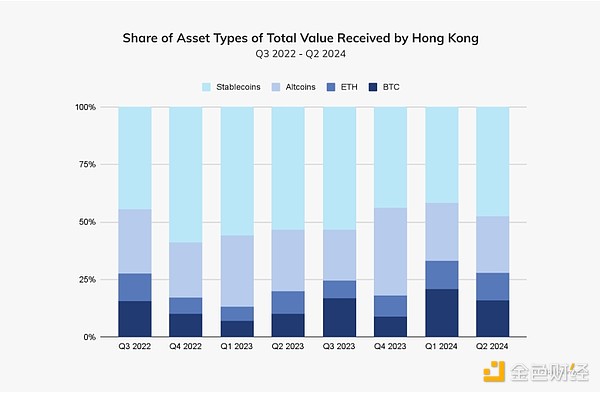
On April 30, 2024, the Securities and Futures Commission (SFC) of Hong Kong's financial regulatory agency approved the public trading of three Bitcoin-based and three Ethereum-based spot Bitcoin ETFs. In the month leading up to this launch, we saw a significant increase in institutional Bitcoin transfers, many of which occurred on mainstream exchanges collaborating with institutional enterprises.
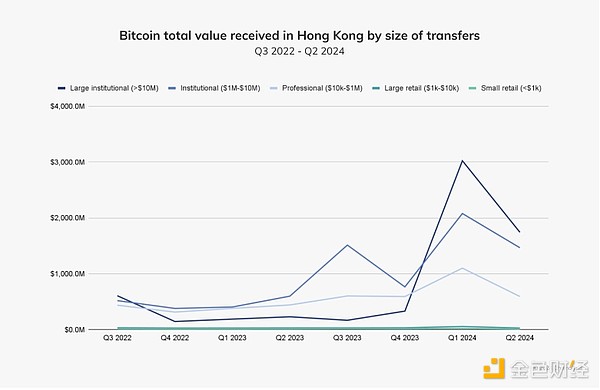
OSL, a leading digital asset trading platform in Hong Kong, providing institutional-grade cryptocurrency trading services, explained how these ETFs are impacting the market. "With improving market conditions, we see signs of increasing institutional interest, which may lead to increased capital inflows in the near future. These ETFs not only provide a regulated pathway for investing in digital assets, but also spark interest in directly holding BTC and ETH. This shift is significant as it marks a transition from traditional financial instruments to more direct involvement in digital assets, reflecting a broader acceptance and understanding of their potential in the institutional investment community."
免责声明:本文章仅代表作者个人观点,不代表本平台的立场和观点。本文章仅供信息分享,不构成对任何人的任何投资建议。用户与作者之间的任何争议,与本平台无关。如网页中刊载的文章或图片涉及侵权,请提供相关的权利证明和身份证明发送邮件到support@aicoin.com,本平台相关工作人员将会进行核查。




